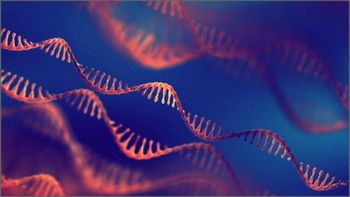
LDI-MS Detects and Shows Detection Limitations for Single Silver Nanoparticles
The subatmospheric pressure laser desorption ionization-mass spectrometry platform proposed here showed potential for mapping low-abundance biomarkers.
Nanoparticle (NP) applications are widely used in modern drug delivery, imaging, sensing, or therapeutics, but the analysis of single such particles is challenging (1). A team based at Masaryk University in Brno, Czech Republic, is proposing subatmospheric pressure (subAP) laser desorption ionization-mass spectrometry (LDI-MS) for this purpose, using specific gas phase reactions in a subAP ion source that is connected to an orbital trapping mass spectrometer.
subAP-LDI-MS involves creating a low-pressure environment in the ionization source by reducing the atmospheric pressure. In this method, a laser is used to desorb and ionize molecules or particles of interest from the sample. The ions generated are then analyzed by a mass spectrometer, which measures their mass-to-charge ratio (m/z). By operating at subatmospheric pressure, the technique enhances the efficiency of ionization and ion transfer, leading to improved sensitivity and detection limits. LDI-MS is valuable for studying the composition, structure, and characteristics of samples at the molecular level.
The research, recently accepted by the Journal of the American Society of Mass Spectrometry, builds on proven analysis of NPs such as scanning or transmission electron microscopy (SEM and TEM, respectively), which yield high-resolution images but are limited in their capabilities to handle sample preparation and types, and to produce information on chemical and molecular structure (1). Mass spectrometry (MS), on the other hand, allows for direct measurement of ion mass-to-charge ratio, and refinements such as single-particle inductively coupled plasma MS (spICP-MS) and laser ablation spICP-MS have made nanoparticle analysis more precise.
With the LDI-MS method ultimately deployed here, the research team said they sought to particularly focus on sample preparation that would achieve deposition of the individual NPs across a predesignated area (1). They found that all silver (Ag) NPs detected in this experiment (80 nm each) could be found, individually, with an orbital trap analyzer. A piezoelectric dispenser deposited droplets on glass slides that were then examined with SEM, finding 50 spots of 2.7 × 1.2 mm array for a tally of NPs totaling 308 ± 15.
Limiting factors listed by the researchers included the detection limits in the Orbitrap mass analyzer itself, in addition to shortcomings in laser fluence and signal processing software. Updated mass spectrometers, the study said, might be expected to detect NPs with 100% efficiency, since single NPs were determined even under the standard conditions available in this test (at a rate between 84% and 95%, according to the results) (1).
Still, because data processing is considered so essential in nanoparticle analysis, even the findings gathered in this study, and the difficulties and uncertainties they uncovered, were considered to be a building block for further multiplexed biomarker mapping.
Reference
(1) Žalud, M.; Prysiazhnyi, V.; Bednařík, A.; Preisler, J. Detection of Single Ag Nanoparticles Using Laser Desorption/Ionization Mass Spectrometry. J. Am. Soc. Mass Spectrom. 2023. DOI:
Newsletter
Join the global community of analytical scientists who trust LCGC for insights on the latest techniques, trends, and expert solutions in chromatography.





